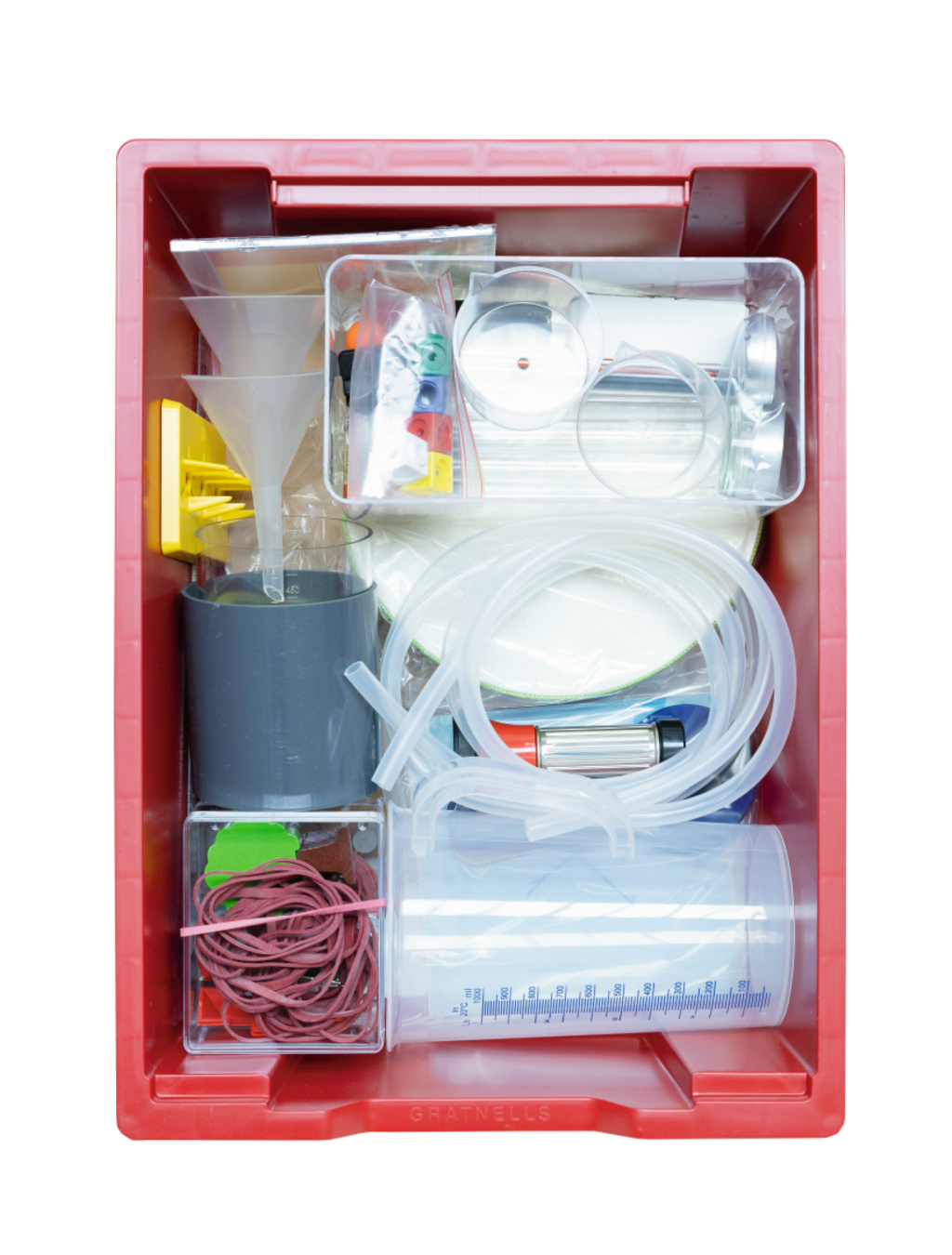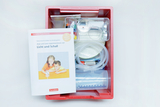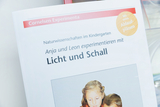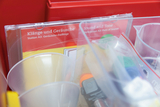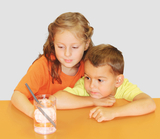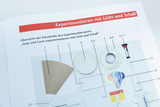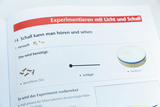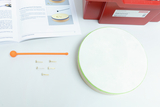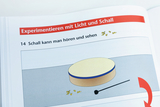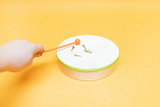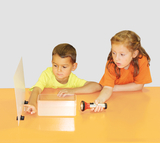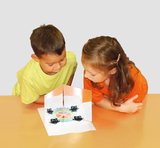Kindergarten kit Anna and Leon experiment with light and sound
Light and sound – that’s interesting!
This is a set of materials with which children can learn all about the phenomena surrounding light and sound.
They will for example experience that light is coloured and will be amazed that sound cannot only be heard but also seen.
The children will be interested to explore the phenomena. The easily to understand, robust materials in the box will help and encourage them.
The children should be introduced to the following findings with the help of the experiment:
- Light can be prevented from spreading by opaque bodies.
- A dark space, the shadow, is created behind an opaque body.
- The size and direction of the shadow depends on the direction from which the light hits the opaque body.
- No shadow is created behind transparent bodies when they are illuminated.
The children should be introduced to the following findings with the help of the experiment:
- Light rays are reflected back from shiny surfaces, they are reflected.
- Mirrors reflect the light rays in such a way that they show an image of what is in front of them.
- The direction in which the light rays are reflected back depends on the direction from which they come.
The children should be introduced to the following findings with the help of the experiment:
- Light rays always travel in a straight line as long as they do not strike a substance other than air.
- If light rays hit a material that they can penetrate (water, glass), they are deflected from their direction. They are refracted. Afterwards, they run in a straight line again.
- The deflection from the direction occurs both when the light enters the other substance and when it exits.
The children should be introduced to the following findings with the help of the experiment:
- Light rays can be deflected from their straight path, they are refracted.
- Light rays are deflected from their straight path when they come from the air and hit transparent materials (water, glass).
- When light rays are deflected from their path, images are created that deviate from reality. Things can appear larger or smaller.
The children should be introduced to the following findings with the help of the experiment:
- Light looks white, but it is a mixture of different colors.
- The colors of light are the colors of the rainbow.
The children should be introduced to the following findings with the help of the experiment:
- Tones can be high and low.
- The pitch of a tone can be influenced.
The children should be introduced to the following findings with the help of the experiment:
- Sounds are produced by vibrations of objects.
- Tones (sound) propagate by passing on these vibrations to the air around them.
- The ear can perceive these vibrations.
The children should be introduced to the following findings with the help of the experiment:
- Sound waves are vibrations that contain energy.
- Sound waves can cause other bodies to resonate.
- This resonance causes vibrations in these bodies.
The children should be introduced to the following findings with the help of the experiment:
- Sound propagates through the air in all directions.
- Sound can also be transmitted by solid bodies.
- Sound is conducted better by solid bodies than by air.
The children should be introduced to the following findings with the help of the experiment:
- Light is reflected back from shiny surfaces.
- Mirrors reflect the light coming from an object in such a way that you see an image of what is in front of the mirror.
- Mirrors can also reflect back an image of another mirror when it hits that mirror.
The children should be introduced to the following findings with the help of the experiment:
- Transparent bodies can also reflect part of the light and act like a mirror.
- The image of an object in front of a transparent pane appears behind the pane as an apparent image at the same distance as in front of the pane.
- If the body in front of the pane moves, the image of the body behind the pane also moves.
The children should be introduced to the following findings with the help of the experiment:
- Light can be colored.
- Colored light can be mixed. This creates new colors.
- There are basic colors (red, blue, yellow) and many other colors can be created from them.
The children should be introduced to the following findings with the help of the experiment:
- Sound propagates through the air in all directions.
- Sound can be directed in one direction.
- Sound can be received from one direction.
- The direction of sound can be determined when listening.
- 1 × Measure, 1000ml
- 1 × Coloured paddle, dark red
- 1 × Lidfoam grey,515x355x10mm
- 4 × Cross base
- 1 × Carton for SEG (large tray)
- 1 × Coloured paddle, green
- 1 × Coloured paddle, blue
- 1 × Beaker, plastic 500 ml
- 1 × Coloured paddle, yellow
- 1 × Coloured paddle, red
- 1 × Tambourine 200 mm Ø
- 1 × Coloured paddle, purple
- 1 × Ruler 30 cm, plastic
- 1 × Figure of a tree, 8 cm
- 2 × Plastic box 105x90x50 mm
- 3 × Silicone tubing, 7/1,5 mmper m
- 3 × Plastic-mirror, flexible 150x150 mm
- 1 × Trough, plastic transp. 210x110x80 mm
- 6 × Rubber stopper 15/11mm
- 1 × Test tube stand, plastic
- 1 × Screen, transparent, 150x150 mm
- 1 × Dropping pipette, plastic
- 1 × Glassholder for tealight
- 2 ×
- 1 ×
- 1 ×
- 1 × Tube, grey, 95x90mmØ
- 1 × Storing tray, deep, red
- 2 × Toy car
- 1 × Cord with membrane plates
- 2 × Triangular bridge
- 1 × Music box with crank handle
- 1 × Set 5 small cubes
- 1 × Sound samples CD 3
- 2 × Beaker w. punctured base
- 1 × Stand rod, plastic 200x8 mm
- 1 × Battery cells, 1,5 V, R 3set of 4 pcs.
- 1 × Lid for 75028 + 75038
- 1 × Plastic mallet, 160 mm (drum stick)
- 1 × Cover for felt paper
- 6 × Plastic test tube, 152 mm
- 1 × Sound funnel
- 2 × Funnel, PP, 75 mmØ
- 20 ×
